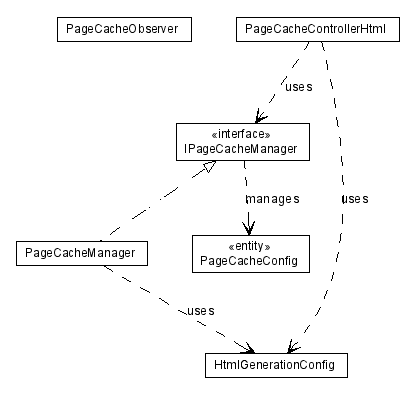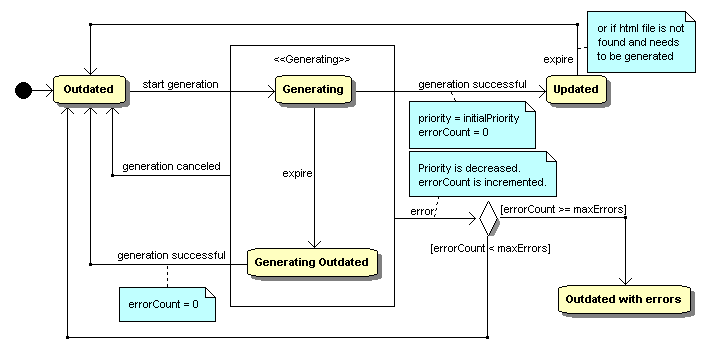
|
||||||||||
| PREV PACKAGE NEXT PACKAGE | FRAMES NO FRAMES | |||||||||

See:
Description
| Interface Summary | |
|---|---|
| IPageCacheManager | Provides page cache operations. |
| Class Summary | |
|---|---|
| HtmlGenerationConfig | Contains configurations for the cache HTML generation. |
| PageCacheConfig | Stores information about the caching of a page. |
| PageCacheControllerHtml | Contains implementations for handling HTTP requests specific for page HTML cache scenarios. |
| PageCacheGeneratorStarter | Starts and stops the page cache generators. |
| PageCacheManager | Manager for page cache information. |
| PageCacheManager.HttpAccessResult | Structure used to hold the result of
PageCacheManager.doHttpAccess(URL, String). |
| PageCacheObserver | Observer that clears page caches according to the notifications received. |
| PageCacheUrlConversionCacheObserver | Triggers the clearing of url conversions due to updates of pages or channels. |
| Enum Summary | |
|---|---|
| IPageCacheManager.GenerationOutcome | Indicates the outcome of a page generation. |
Implements the portal's page HTML cache engine. Generates the HTML for pages with cache enabled and handles requests for missing caches.
IPageCacheManager is the main entry point
for this package. An instance of this interface may be obtained by calling
ManagerFactory.getPageCacheManager().
A generator runs in the background, generating the cache for pages outdated.
PageRenderDataChangedEvent events are observed,
invalidating the corresponding caches as appropriated.
Shadow cache, when enabled, saves the generated HTML in a second-level cache. When page cache is requested but not present, the shadow cache copy is used if available.
The configuration for the HTML cache feature is encapsulated by
HtmlGenerationConfig, available in
PortalContext.getHtmlGenerationConfig(). This
configuration is done in the lumisportalconfig.xml file.
Refer to HtmlGenerationConfig for
more configuration details.


|
||||||||||
| PREV PACKAGE NEXT PACKAGE | FRAMES NO FRAMES | |||||||||